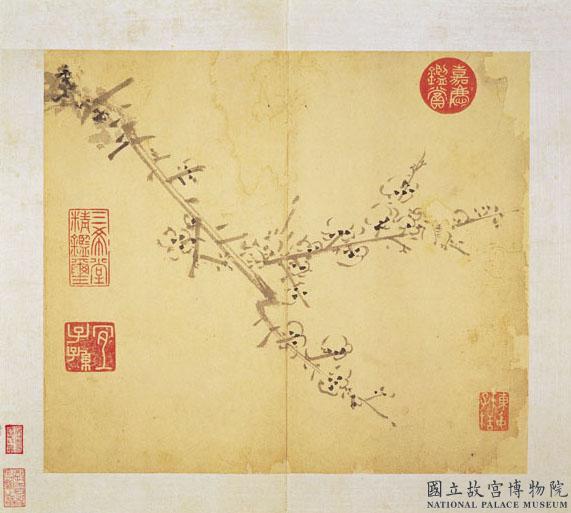明陳栝四時花卉 冊 梅
推薦分享
資源連結
連結到原始資料 (您即將開啟新視窗離開本站)後設資料
- 資料識別:
- 故畫001137N000000010
- 資料類型:
- 類型:繪畫
- 型式:靜態圖像
- 著作者:
- 陳栝
- 主題與關鍵字:
- 梅(白.紅.蠟梅)
- 出版者:
- 數位化執行單位:國立故宮博物院
- 格式:
- 本幅 24x27.5公分、全幅 30x33公分
- 關聯:
- 石渠寶笈三編(延春閣),第四冊,頁1951 &*故宮書畫錄(卷六),第四冊,頁51-52&*故宮書畫圖錄,第二十二冊,頁308-311&* 陳栝,字子正,自號沱江,嘉靖年間(約十六世紀中葉),江蘇長洲人,是陳道復的兒子,為人放誕不羈,嗜好飲酒,有東晉竹林七賢的遺風,他的畫以花卉見長,而且能夠繼承乃父的畫風,筆勢飛勁,水墨淋漓,饒有生趣。他畫的梅花,尤其被人贊賞,畫史上且有一則有關他畫梅的傳奇:「一天,打雷後,有人看見地上畫著一枝梅花,上面寫有「沱江」二字,於是,一時傳說他的畫為神雷代筆,有仙氣,因此畫名遠播」。故事雖屬荒謬不可信,但足以說明他畫梅的有名。&*Plums Ch’en Kua Ming Dynasty Ch’en Kua (tzu Tzu-cheng, hao T’o-chiang) was a native of Ch’ang-chou in Kiangsu and the son of the painter Ch’en Tao-fu. Expansive by nature, he loved wine and in his behavior carried on the tradition of the “Seven Sages of the Bamboo Grove” of the Eastern Chin (317-420, a famous group of scholars who withdrew from society and passed their time drinking, playing music, and writing poetry). His best paintings represent flowers and carry on the style established by his father. Ch’en Kua’s brush is strong but fleet, his monochrome ink rich and wet, conveying an impression of abundant life. His paintings of plums have elicited special praise from critics, including this passage from a history of painting: “One day after a thunder storm, a painting of a brancn of plum blossoms was discovered on the ground; it was signed “T’o-chiang” (Ch’en Kua). Therefore it was said that his brush was inspired by the spirit of the thunder and possessed the air of the immortals. Because of this, the fame of his paintings has spread far and wide.” Although this story is far from credible, it illustrates the great fame of his plum paintings.
- 管理權:
- 國立故宮博物院
授權聯絡窗口
- 國立故宮博物院圖像授權、出版授權、影音資料授權-申請流程說明
http://www.npm.gov.tw/zh-TW/Article.aspx?sNo=03003061






